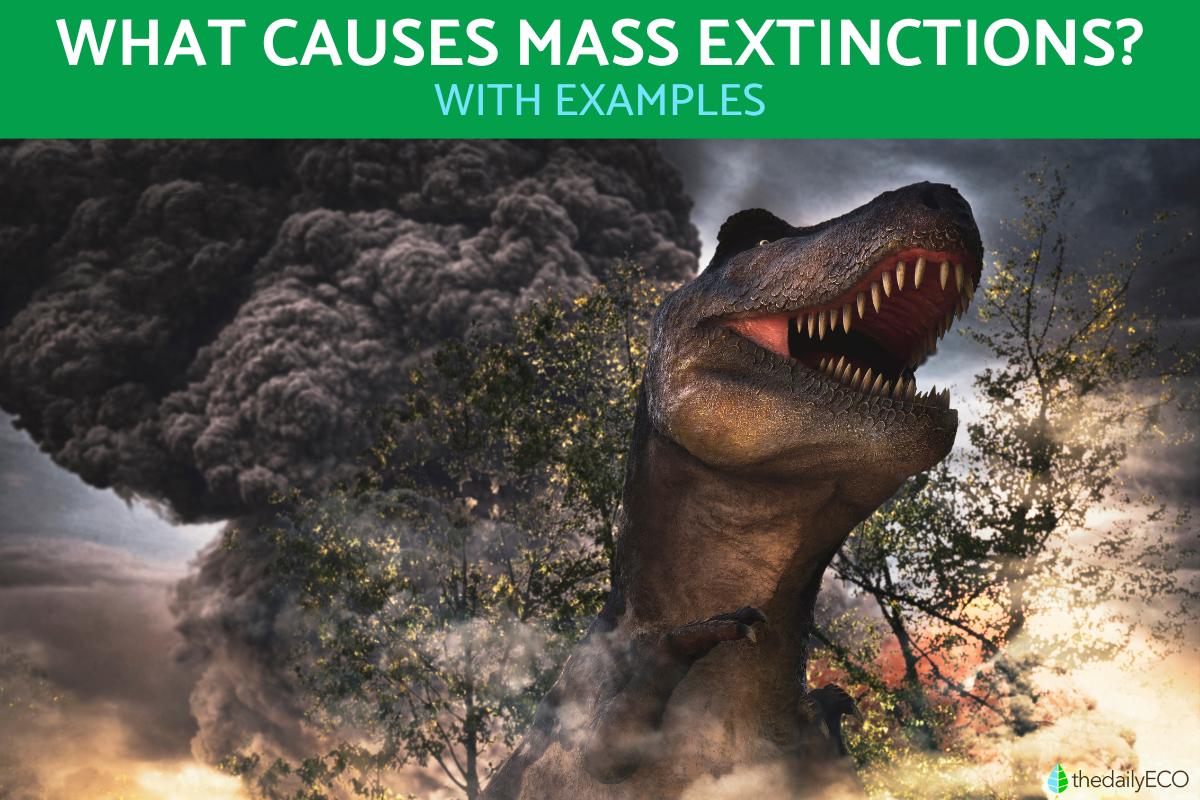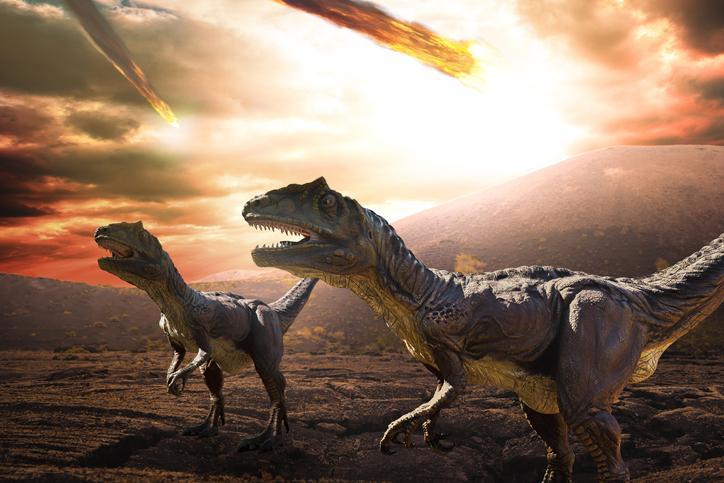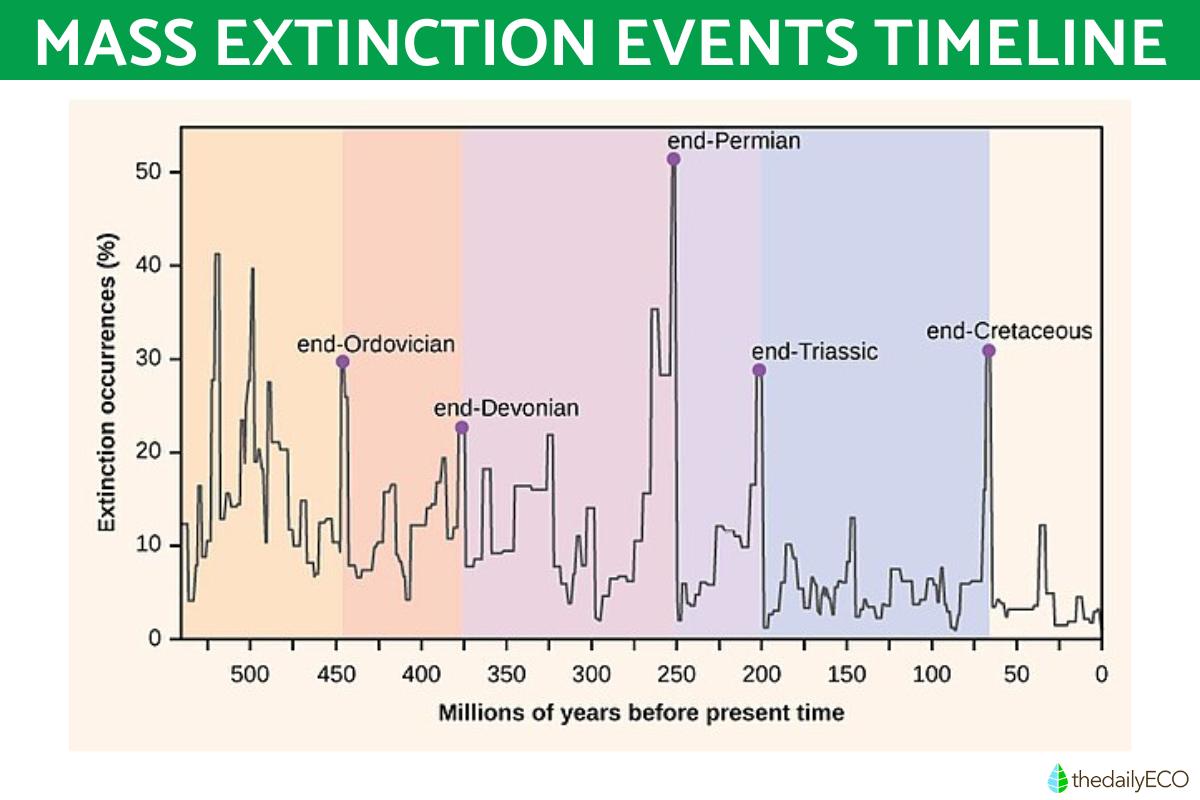What Causes Mass Extinctions?

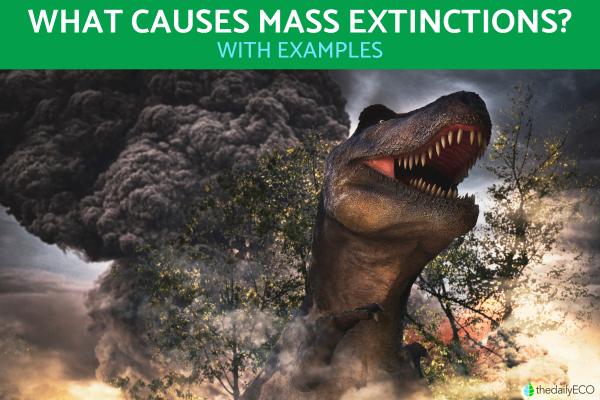
Planet Earth is more than 4.5 billion years old. Life on Earth evolved from initial molecules which eventually became the living organisms we know today which can vary greatly in complexity. While various unknown events helped to form life, others worked to curtail it or at least change its course. Included within this latter category are mass extinctions. Animal species can become extinct for many reasons, whether due to environmental changes or even human impact factors. A mass extinction is a rare event whereby multiple species become extinct in a specific geographical area over a relatively short space of time.
While we know what a mass extinction even is, thedailyECO asks what causes mass extinctions? To understand the nature of these extinction events, we also look at some of the most significant mass extinctions in history.
What are mass extinctions?
Living organisms can become extinct when no members of their species have anymore offspring and are no longer capable of reproducing. Populations of a species can become extinct in certain areas, but an entire species is extinct when there are no longer any specimens left on Earth. Mass extinctions occur when there are many species which become extinct during a relatively very short period of time.
Even within mass extinctions, there are gradations. For this reason, we can classify extinctions in the following ways:
- Background extinctions: occur randomly across all groups of organisms and are lost gradually. Together, these extinctions are known as the norma, extinction rate of species.
- Mass extinctions: cause a sudden decrease in the number of species that inhabit a certain geographic region and occur over a short period of time.
- Catastrophic mass extinctions: happen instantly and on a global scale, resulting in a dramatic decrease in species biodiversity.
Mass extinctions are one of the reasons why Earth looks very different than it did even 50,000 years ago. You can learn more about how these differences arose with our article on types and examples of megafauna.
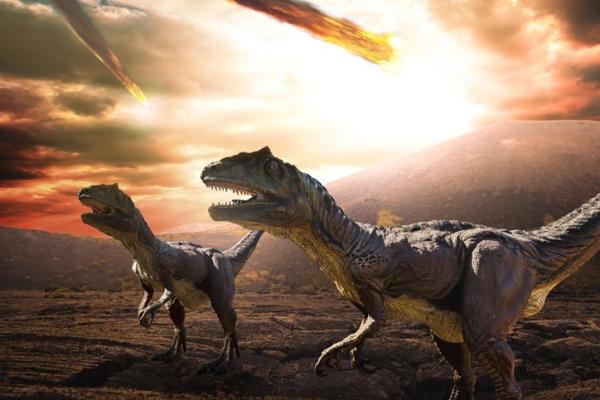
Causes of mass extinctions
The geological and fossil records show that mass extinctions have occurred. While the clues to the causes of these catastrophic mass extinctions are found therein, they are not always easy to decode. For this reason, there are certain hypotheses which posit why mass extinction events occur. Any given mass extinction event may also have multiple causes. The main causes of mass extinction events include the following:
Biological causes
In these cases, the characteristics of the species themselves will influence their demise. This is seen in the evolutionary process known as natural selection, whereby the animal's phenotype will determine their survival. Competition between species can also affect their extinction rate. For example, some invasive species in a given territory can replace another. Deep-rooted extinctions generally occur for these reasons.
Environmental causes
Environmental causes include changes in temperature, sea level, biogeochemical cycles, tectonic plate movements and others. In this case, if the species fails to adapt to the new living conditions and becomes destined for extinction as a result. One very destructive environmental cause of mass extinctions is volcanic activity. Large volcanic eruptions can decimate plant and animals species in the surrounding areas.
Discover what causes a volcano to erupt with our related article.
Extraterrestrial causes
While this may suggest that species extinction is caused by aliens, there is no conclusive evidence that sophisticated organisms have yet visited us from other planets. These extraterrestrial causes of extinction events include the impact of asteroids and meteorites on the surface of the Earth.
Species extinctions occur during and after the impact of these extraterrestrial bodies. When sufficiently large, they can cause changes to the atmosphere among other effects. Catastrophic mass extinctions such as the extinction of the dinosaurs are believed to have possibly occurred due to extraterrestrial causes.
Anthropogenic causes
These are causes originating exclusively from human action. For example, agricultural, mining, oil drilling, forestry exploitation, environmental pollution, introduction of invasive species, hunting, illegal wildlife trade and global warming are some of the environmental problems that humans have introduced into ecosystems and that undoubtedly lead to species extinction.
Better understand the impact of human impact on ecosystems with our article explaining the different types of environmental degradation.
What ¡mass extinctions have occurred on Earth?
It is very difficult to determine exactly how many catastrophic mass extinctions have occurred over the course of our planet's 4.5 billion years. We do have evidence of at least five. Many scientists also claim we are currently in the middle of a mass extinction event. In this section, we look at the different mass extinctions which have occurred throughout Earth's history, as well as their estimated duration and causes.
Ordovician-Silurian extinctions
Also known as the Late Ordovician mass extinction (LOME), the first mass extinction is believed to have occurred approximately 444 million years ago. It is estimated to have lasted between 500,000 and 1 million years, resulting in the extinction of more than 60% of species. There are several theories about the causes of this extinction, the most compelling of which is a supernova explosion that produced changes in sea level and the ozone layer.
Learn more about how this layer over the Earth's atmosphere influences species survival with our article asking what is tropospheric ozone?
Frasnian-Famennian extinction
Also known as the Late Devonian extinction, it occurred approximately 360 million years ago during which more than 70% of species became extinct. This extinction event lasted 3 million years and is believed to have begun with the eruption of a mantle plume. These are deep columns that rise from beneath the Earth's crust and give rise to hot spots and volcanic zones.
Permian-Triassic extinction
Also known as the Late Permian extinction event, this event occurred around 250 million years ago and lasted for around a million years. As a result, 95% of marine species and 70% of terrestrial species disappeared. The exact causes are unknown, but it is estimated that they may have been due to volcanic activity, the release of gases from the Earth's core and a concurrent asteroid impact.
Triassic-Jurassic extinction
This mass extinction event occurred 260 million years ago, lasting a million years and wiping out 70% of species. Theories explaining its causes include the fragmentation of the supercontinent Pangaea and successive volcanic eruptions.
Discover more about another massive continent with our article asking what is the Rodinia supercontinent?
Cretaceous–Paleogene extinction
It happened 66 million years ago and is perhaps the best-known mass extinction event, as it wiped out all the dinosaur species that inhabited the Earth. There are multiple theories explaining the causes, the main ones being high volcanic activity and the impact of a large asteroid. The curious thing about this event is that it not only wiped out the dinosaurs, but also more than 70% of all species. It is estimated to have lasted only 30 days.
To learn more about the biodiversity of these prehistoric animals before their mass extinction, you can check out our article asking how many kinds of dinosaurs were there?
Holocene extinction (proposed sixth mass extinction event)
This proposed extinction event generates numerous controversies. It is an extinction event which is currently ongoing and which has causes which are mainly anthropogenic in origin. Since the development of human industrial activities, the rate of species extinction has been increasing sharply. For example, the rate of mammal extinction is 280 times higher than the normal rate.
It is also estimated that the species that became extinct in the last two centuries (200 years) should have become extinct during a period of 28,000 years. Mitigation of the Holocene extinction includes fighting climate change and reducing the extent of human enterprise. These are difficult tasks with a great amount of political pushback, but they may be the only way we humans do not also become extinct.
To better understand the nature of species decimation, take a look at our article asking why did the great auk go extinct?

If you want to read similar articles to What Causes Mass Extinctions?, we recommend you visit our Biology category.
- Ceballos, G. & Ortega-Baes, P. (2011). The sixth extinction: species and population loss in the Neotropics. Biological Conservation: Latin American Perspectives, 95–108.
- Sassi, F. (2019). History of life on Earth: mass extinctions.





